Click for SiteMap
Table of Contents
The order of the sections is mostly in the order of discovery while I researched
My Shopping for a Vehicle in Peru
Save to buy a crossover, hatchback or van. A van would be vehicle of choice if I'm going to build a house, good for car camping, etc. Or sports car and cargo trailer?
Porsche cayenne with manual transmission is really heavy at 4900 lb. BMW i3?
Below links to find the lightest vehicles:
https://www.auto-tests.com/en/lightest-weight/Crossover/all/
https://insideevs.com/news/527966/electric-cars-from-heaviest-lightest/
Related sites:
Foreigners guide to buying a car in Peru, czickontheroad.com 2020
Buying a Vehicle in Peru, tripadvisor.com 2014
Fuel Efficiency
Improving Automobile Fuel Economy: New Standards, New Approaches, 1991 (PDF)
Aerodynamics, weight, and engine efficiency are elements of gas mileage. The McLaren F1 with a 6 liter V12 engine, painstakingly made to be as light as possible, weighs 2500lbs. Aptera weighs 1800lbs. Lotus Elise weighs 1600lbs.
160 miles, at 20mpg is $50 worst case scenario (distance to Trujillo). I don't live in Venezuela with 6 cents a gallon. For the same reason I should upgrade the solar water heater, to spend $50 less per month on electricity.
Smaller vehicles with tiny engines have better gas mileage, but I don't want something super tiny, because:
- i want a cool looking vehicle
- harsher suspension
- no tow capacity
I'd prefer to have an electric vehicle, and set up a solar array to charge the car. That's great for getting around locally with no fuel cost. However, for long trips there are no electric charging stations in Peru.
Ability to Transport People and Materials
While keeping aerodynamics for fuel efficiency.
I don't necessarily want to get in the business of transporting all the locals. Very few people if at all.
Perhaps a cargo trailer is key for the occasional need for a lot of cargo. I don't always need huge extra space.
Ground Clearance
Vehicles with a lot of body overhang in front or behind the tires look disgusting and have a tough time going over any obstacle.
If I avoid body overhang, I don't need much ground clearance. I can add a little ground clearance with larger tires or a small lift kit. I won't be in off-road sporting competitions. The need for clearance on even poor gravel roads isn't that much.
“Most sedan vehicles generally have an average ground clearance between 4-6 inches whereas SUVs average between 6-8 inches.” 4wheeldriveguide.com Clearance for off-road sport vehicles is 8-10 inches.
Update: After having to do some river crossings during rainy season, maybe some extra ground clearance would be nice. Though it's still hard to choose between the benefit of extra lift and the benefit of having a low center of gravity and better aerodynamics. How often is having, say, 3 inches of additional ground clearance going to be useful? If the water is too high, even 3 inches isn't enough.
El Niño rainy season came and there were many water crossings required, and gravel roads became a nightmare. Although extreme El Niños occur once every 10 years, and non-extreme every 2 to 7 years, I think extreme weather will be the norm as the climate worsens.
A paved road is supposed to be built between Niepos and Oyotun, but no plans for a gravel road to Udima yet. Also with government corruption and instability, construction of the paved road has a lot of uncertainty.
Specifications V1
Mandatory:
- Something I love
- At least 3 seats
- Minimum 2 suitcase cargo space
Good Qualities:
- Fuel efficiency
- Weight less than 3300 lb
- Aerodynamic drag coefficient < 0.34 (toyota previa)myevreview wikipedia
- RWD or AWD so I can go uphill with a trailer on gravel roads
- Enough horsepower to tow a trailer
- Engine and transmission simplicity
- Manual transmission
- Hatchback
- Independent rear suspension
- Near 50/50 weight distribution
- Limited slip differential or torque vectoring
- Ground Clearance
- Driver Visibility
Aptera
With Aptera's built-in solar panels, the fuel efficiency would be the best. I would likely never have to charge it, as even on long trips I prefer to stay a while at every stop. Aptera claims tow capacity. Aptera claims international delivery in 2023/2024, but 2026 or maybe never is more likely.
I really want at least 3 seats and the first generation vehicle will be a two seater. I think a sideways rear seat or middle seat can be fashioned for the Aptera.
Towing Capacity
For shopping travel to nearby cities, I can use a trailer for large items. Aptera FAQ says: “We hope to make a tow package available at some point in the future. We envision Aptera could tow a small lightweight trailer for camping, maybe even adding some extra solar capability.”
A trailer and cargo should not weigh more than the Aptera: “The tow vehicle should weigh close to as much as the trailer and horses combined.” doubletrailers.com
The Aptera weighs 1800 lbs. A flatbed utility trailer weighs 700 lbs, and a small enclosed trailer weighs 1000 lbs. They can carry 1000 lbs. The following video goes on and on to come to the same towing capacity conclusion of about 2000 lb:
Weight in front of the trailer axle adds to traction on the rear wheel of the Aptera.
A flatbed trailer offers less security than an enclosed trailer but is less prone to sidewinds and more versatile and cheaper. Cargo nets and tarps for rain.
Even if an enclosed trailer would weigh more and be less efficient, my application may be to leave contents in the trailer at a “cochera” while I stay in the hotel. Alternatively, with a flatbed trailer I can save big item purchases for the last day, and drive directly from the store to my house like a normal person.
If affordable, the coolness factor of an aerodynamically shaped trailer would be better overall.
Adding a Seat?
A downside to the Aptera is that they made a hump along the floorboard dividing the seats. Supposedly for structural reasons, but I suspect they could have worked around that, and the real reason is to keep the Aptera from having 3 comfortable seats in the front.
They could have made the steering wheel be in the middle, which would have also simplified manufacturing left and right hand drive cars (like for England). The McLaren F1 has this. Alternatively, they could have done as with the Matra Murena and added a middle seat that can fold down to be an armrest:
Looking at the following video, the seats aren't that wide and the space between the seats isn't either. Removing the center console and adding a cushion seat and a pillow backrest would allow three non-fat adults to sit, but in a cramped manner like the back seat of a compact car. Doable but not for more than an hour without a break.
Video: Aptera seat movement, cargo space, airbags
I think it wouldn't be impossible for someone to fit in the middle:
The width of the fuselage is 70“, the same width as a Subaru Impreza. The backseats of the Impreza can fit 3 persons.
Lack of Internal Space
There really is no space behind the seat unless you slide the seat forward:
Instead of having a perfectly flat cargo floor, could they have a ridge along the center for the wheel/suspension. Too much wasted space?
I think there is room for some cramped rear seats. No need to put an artificial boundary as shown by the battery panel placed at 60 degrees behind the front seats.
Making the body wider affects the turning radius, unless they decrease the length of the front wheel airfoils.
Internal vs External Wheels
Because of the external wheels, Aptera's 88” width is 8“ wider than the widest of pick up trucks such as the F150. Instead of external front wheels, they could design integral wheel wells with flexible outer body panels for turning. The front wheels are internal, but with a continuous aerodynamic shell with the body. Like this but not so dull looking:
Aptera has In-Wheel-Motors. There are pros and cons to this. A con of unsprung weight at the wheels is a harsher ride going over rough terrain. This can be diminished by cantilevering the wheels far from the body, so that wheel motion translates to a lesser magnitude of motion at the body. Which may be a reason Aptera chose outboard wheels.
Exploring More Options
So I doubt I'll get the Aptera. I'll shop around for whatever is used. Eventually I will want an electric vehicle, but there isn't anything used in Peru. As of 2021 there's like 3000 electric vehicles in all of Peru. There are absolutely no charging stations. I'll get an old gasoline car and save on depreciation, even though used cars are much more expensive here than in USA.
I really dislike FWD, so I think I will veer away from it regardless. My ideal seems to be RWD, as it is less complex than AWD. Though I wouldn't be disappointed with AWD because of the coolness factor of added grip on gravel roads.
The ideal car could be like the Hyundai Veloster:
- Little body overhang over the wheels
- Small suicide rear door(s)?
- Moon roof
- Enough height to have some internal volume, but not too much as it will suffer in aerodynamics
- Hatchback (hot hatch)
What's lacking with the Veloster is RWD/AWD. Drat! The Veloster is FWD only.
Also, the Veloster doesn't have suicide doors
“Unlike its front-wheel-drive forebears, the Veloster N ETCR is rear-wheel-drive, with its electric motor mounted ahead of the rear axle to technically make it mid-engined.” thedrive.com. The Veloster N ETCR is unfortunately not a production car.
“The Hyundai Veloster N will not return for the 2023 model year, the company announced today. Hyundai said the decision is due to the introduction of the Elantra N and Kona N.” caranddriver.com. More on wikipedia
The Veloster is like an extended version of the 1988-1991 Honda CRX, which is also FWD.
The Toyota Yaris has an AWD option, but it's too small of a vehicle.
Dimensional comparison between Veloster and Yaris
Yaris wheelbase is 2550 mm, and height is 1470mm with ground clearance of 145mm. Overall length is 3940mm.
Veloster wheelbase is 2650mm, and height is 1400mm with ground clearance of 140mm. Overall length is 4220mm.
Porsche Cayenne height 1700mm, width 1928mm. Overall length is 4782mm.
The Nissan Juke concept car excellent. The production car looks terrible:
Only the concept car that led to the Juke had suicide doors:
The Juke got bigger with newer model years. I think there's a 2011-2014, a 2015-2018, and a 2019 (see carbuyer.co.uk review). The 2019 was significantly bigger though 50 lbs lighter (see Wikipedia).
Unfortunately, the Juke with AWD is only available with a CVT automatic transmission. Further confirmation here. I think this is also true for the Fiat 500x.
The Mazda MX-30 has suicide doors, but it's an electric vehicle with poor range, and started selling in 2020.
The Mazda 3 with a 2.0 liter engine gets 30/40 mpg. 40mpg highway is among the best according to caranddriver.com. Mazda 3 is available in AWD as an option, but the option is so rare that I can't find a used AWD Mazda 3. Ford Focus diesel gets an amazing 56mpg according to a friend of mine in England.
Porsche Cayenne
The Porsche Macan is out because no manual transmission is offered.
Curb weight be damned, a 2006 Porsche Cayenne V6 may be the best deal? Only the rich in Peru can afford them and their bad gas mileage, and the rich want to sell an older car and get a new one. The main obstacle is that Porsches with manual transmissions are very rare.
Doug Demuro review of 2009 Porsche Cayenne GTS V8 naturally aspirated manual
carfax.com (link requires USA VPN) has ads starting at $7K for Porsche Cayenne with ~200km odometer readings. Will the prices be comparable in Peru?
It's not like I would drive it daily, so I could afford to pay more for gasoline on occasion? I can also modify the engine to run on compressed natural gas to reduce fuel cost. See section below on CNG.
Porsche has parts available in Lima:
https://www.porsche.com/latin-america-en/_peru_/aboutporsche/importers/
https://dealer.porsche.com/pe/lima
Also a lot of Porsche parts are rebadged VW parts, which can be had for a lesser price.
I have this idea that Porsche would make its cars from superior materials. For example, the suspension would have less inertial mass to provide superior ground traction. Better performance engineering. Toyota, by contrast, may be more focused on longevity. However, this idea is not a solid conclusion. Would I be getting aluminum or titanium suspension arms instead of heavier cast iron?
The articles are not really conclusive, so I ask this question on Quora: Are Porsche suspensions made from lighter materials like titanium, carbon fiber, magnesium, etc., than other less expensive cars?
fcpeuro and edmunds.com have images of Porsche Cayenne suspensions, but don't mention materials. fcpeuro.com does say the body and suspension are overbuilt.
“On the rear axle of the Cayenne and Cayenne S, Porsche is continuing to fit a multi-link suspension with lightweight steel links and steel springs as standard.” porsche.de
Engines
Engine Layout
For a reciprocating internal combustion engine, my ideal for engine simplicity would have:
- smallish 6 cylinders (L6, V6, or flat 6)
- air cooled
- 2 valves per cylinder
- OHV for flat/boxer/V6, or SOHC for L6
I like a 6 cylinder because it runs more smoothly than a 4 banger. A boxer engine is by nature smooth but is more complicated, with somewhat unresolved technical issues (gravity does not help oil lubrication).
Turbo or Supercharger
Even though adding a turbo allows you to get better fuel efficiency by reducing the size of the engine (keeping the same output power), the tradeoff is added engine complexity and shortened engine lifespan. See Turbocharging to Save Gas, Instead of to Go Fast, forbes.com
Valvetrain
There are overhead cam OHC and overhead valve OHV engines. Each has pros and cons. See article by axleaddict.com.
I'd rather have low and mid range torque of SOHC (see video). Which engine provides the greatest area under the curve for torque vs rpm? The video below says SOHC provides higher torque at low and mid range RPM due to lower valve train mass than DOHC.
Some engines with 2 valves per cylinder use rocker arms between the cam and the valves, so the intake and exhaust valves are at an angle to each other. Adding rockerarms allows valves at an angle to the cylinder chamber for better gas flow, but also increases valvetrain mass. How detrimental is the added mass? It must be worth the tradeoff for an engine that can breathe at a higher RPM.
Could you add Variable Valve Timing (VVT) and Variable Valve Lift (VVL) on the 2 valve per cylinder SOHC engine?
Engine Examples
One of the best performing engines, when defined solely by horsepower, was used in the Honda S2000.
Honda F20C engine: 1,997 cc (2.0 L) with 247 hp (250 PS)
Nissan SR16VE N1 engine: 1,600 cc (1.6 L) with 197 hp (200 PS)
It's too bad the Wankel rotary engine didn't continue development, as I think it would be superior to any reciprocating engine. As a bonus, Wankels run great on hydrogen, which works well for going off-grid. However, the future now lays in electric vehicles.
Suspensions
Independent Suspension
An independent suspension has the benefit of not having a beam across the bottom of the car at the height of the center of the wheels. Case in point, solid rear axles, but can also be the case with torsion beam suspensions.
Torsion Beam Suspension
The lowly torsion beam suspension can be a simple and effective option for application in sports cars or passenger cars where there isn't a lot of wheel travel. Sports cars have strong roll bars which produces the same effect that a simpler torsion beam does, although with less ability to fine tune how the wheels move.
Torsion beam is inferior offroad or going over significant bumps. Veloster.org threads: one two.
Tires Are Critical To Effective Suspensions
Higher Tire Pressure Damages Rims
Running higher than the correct pressure is harmful to the rims and suspension because the tires do not absorb a sufficient amount of the impact.
Lower Tire Pressure Damages Rims
There are two dangers in lowering tire pressure:
1) For highway speeds, lowering pressure will result in excessive heat generated from tire deformation.
2) On impact with ground deformities, as long as the tire deflection does not reach the rim, the rim will not be damaged from direct contact with the ground. Lowering tire pressure increases the risk of contact.
I can't find an online calculator for the lowest pressure that will cause tire to rim contact, from a bad pothole at a given speed, tire width and height, weight on a wheel, spring rate, etc. Too complicated.
Lowering Tire Pressure
A lower pressure will afford a smoother ride over rough terrain:
Google search will produce many results saying not to drop tire pressure below 20 PSI. Mostly, bead lock wheels are needed when dropping below 12-16 PSI to keep the tires from coming off the rims.
Factors To Determine Air Pressure On The Trail, 4wheelparts.com
A portable air pump can inflate tires when transitioning from rough terrain to highway.
Aspect Ratio
In order to lower tire pressure, you need high aspect ratio tires. For gravel road speeds up to 50mph, maybe the minimum tire aspect ratio to consider is 70 series. Below 70 series, you may have an unacceptable risk of bending rims upon impact with surface irregularities or rocks. Potholes and tire pressure, bobistheoilguy.com
After purchase update: I am currently running 55 series (215/55R17) at 20 PSI over gravel roads. I've not yet had issues, so I assume this pressure is fine. I don't drop below this pressure because visually there isn't much thickness of tire, and because my rims are slightly wider than my tires.
Aintlostjustdkwiam on Reddit thinks I'm fine to drop to 20PSI on my 55 series tires. “This is one of those things where you find out you went too far by cracking a rim.”
Ponklemoose on Reddit: “The impact of a wheel hitting a pothole or rock is generally a pretty obvious cracked wheel or cut sidewall.”
Tire Width vs Rim Width
“A narrower rim will retain the tire bead at low pressure better than a wider rim. This better retention is because the tire bulges out more with a narrower rim. A 35×12.50R15 tire on a 15×8 rim could use a pressure as low as 10 psi on a typical trail rig without the tire coming off the wheel.” 4wheelparts.com
Sidewall Flexibility
The softness of the ride also depends on the tires ability to deform. Soft sidewalls and more flexible belt plies helps with this? Read Basic Tire Tech, Bill Ansell 2008
Tire Contact Patch Shape
Kai in Tinkerer's Adventure thinks narrower tires perform better off-road. The longer instead of wider tire contact patch of a narrower tire is able to “caterpillar track” over deformities.
Kai does an experiment on same height tires on the same rims (including same rim width), with the only difference being the tire width.
Kai shows that for a particular brand of radial tire, the contact patch is rounded and isn't even the full width of the tire until about 5 PSI. Furthermore, at the same tire pressure, the contact patch area is the same regardless of width. Which should be obvious that pressure X area should equal the weight of the vehicle.
Lower Pressure for a Wider Tire
A wider tire should be run at a lower pressure, so that the contact patch width is relative to the tire width, as the manufacturer intended for the tire. There is a calculator for tire pressure relative to tire width:
https://tiresize.com/pressure-calculator
This lower pressure will allow greater tire deformation.
Higher Volume for a Softer Ride
My conclusion is that I will want to stick as much volume of tire as I can into a mostly unmodified suspension, then run a lower tire pressure for a softer ride.
Most sports car tires in the 70s were 70 series. Common vintage tire sizes didn't go less than 60 series:
Vintage Car Tyre Conversion Chart, errolstyres.co.za
Vintage Tyres, longstonetyres.co.uk
A pliable tire also affords greater cornering performance, off-road and also on the track. See: Practical Tire Aspect Ratio
Transmission Differentials
Limited Slip Differential
Limited slip differentials (LSD), as opposed to open differentials, provide torque to the wheels with the most grip, to keep from getting stuck going up gravel roads. See driving for answers on YouTube.
Datsun 240Z, 260Z, and 280Z from the 70s have LSD.
Most cars have open differentials. Some of these cars have torque vectoring added to the open differential.
Open Differential with Torque Vectoring
See carexpert.com itstillruns.com caranddriver.com
“Mechanical LSD can also introduce additional understeer under power as it locks up, since it's forcing both rear wheels to turn at the same rate, instead of allowing them to turn at different rates to match the corner radius. Torque vectoring can overdrive the outside rear wheel, which induces a turning moment and oversteer.” xtremepsionic on reddit
RWD vs FWD on Gravel Roads
4WD or AWD has better traction, but adds transmission complexity.
2 Wheel Drive Rally, FWD or RWD? reddit.com
Aside from being advantageous for towing, RWD is on par with FWD for Rally. Each has advantages depending on the rally course. RWD benefits from a capable driver and an easy to control gas pedal. Also the vehicle weight distribution needs to be well balanced. Poor balance would be 60% of weight on front tires in a RWD car.
“RWD is a lot of fun and probably has an edge on tarmac and uphills. FWD will tend to have an edge on mid to high speed corners and downhills.”
CNG Compressed Natural Gas
Lower Fuel Cost
In Peru you can get liquified gas at gas stations. The cost per mile for liquified gas is less. You can convert the engine to run on either gas or gasoline with the flip of a switch while driving.
“A diferencia de la gasolina, hay un ahorro significativo. Por ejemplo, por cada 100 kilómetros que se recorre con un auto que emplea gasohol de 95, un ciudadano debe gastar un aproximado de S/ 64; mientras que con gasohol de 90, S/ 57,08 y con diésel, S/ 44,90. En el caso de GLP, le demanda al usuario desembolsar S/ 33,26.” larepublica.pe
So it's about half the cost per mile to use natural gas instead of gasoline.
Characteristics
Gasoline engines modified to use CNG are not ideal CNG engines. CNG is not injected into the cylinders. On carbureted engines and engines modified to run on CNG, the natural gas will use up more volume than a liquid like gasoline, and the amount of oxygen reaching the cylinder is less.
Because better mixing takes place between air and natural gas, there is a more complete combustion. This is one reason a CNG engine runs hotter. Also, the evaporation of gasoline has a cooling effect. There are other factors for hotter temperatures using CNG:
Due to the higher heating value and higher density, combustion of CNG produces a comparatively large amount of heat than the gasoline combustion. Thus, operating CNG as an alternative fuel for gasoline engines causes engine overheating problems. This could affect the engine components, shortens the lifespan of the engine components and also cause pre-ignition in the combustion chamber. … it is suggested to use synthetic coolants for dual-fuel engines as it can help to control the temperature and can prevent the engine overheating. Thermal analysis of natural gas as an alternative fuel for gasoline engine, Ravichandra et al 2020
So the engine will run hot unless using a synthetic coolant. But no one uses water! Cars always have synthetic coolant! I guess that study is valuable because some synthetic coolants are better than others.
Further reading:
Carfolio !
Carfolio section is huge so click to expand
carfolio.com
Wow, this site rocks.
Related sites:
https://www.cargurus.com/Cars/spt_rwd_manual_cars
Air Cooled RWD
The only vehicle I can have with the following mra6 specifications is a 1962 Chevrolet Corvair Station Wagon (flat 6 OHV).
- manual transmission
- rear wheel drive
- air cooled
- 6 cylinders
- hatchback, suv, minivan, or station wagon
There are plenty of vehicles without the 6 cylinder criteria: mra specifications. Upon applying the filters “SUV, minivan, or hatchback” to the mra specifications, the remaining vehicles are 4 cylinders. Although this likely has more to do with the incomplete nature of the carfolio database.
SUV (the only one): 1979 Gurgel X-12 (flat 4 OHV)
Minivan (the only one): 1960 Volkswagen Microbus de Luxe (flat 4 OHV)
Hatchback (the only one): 1981 Volkswagen Igala/Brasilia (flat 4 OHV). The other car on that page, the Daihatsu Fellow, was water cooled according to other sources.
Let's add to the mra specifications: mra2no specifications:
- manual transmission
- rear wheel drive
- air cooled
- 2 valves per cylinder
- normally aspirated
- oversquare stroke/bore
4-Door Sedan (the most modern one): 1996 Tatra 613/700 (V8 DOHC)
Coupe (the most modern one): 1998 Porsche 911 (flat 6 DOHC), 1995 Porsche 911 (flat 6 SOHC)
1972 Volkswagen SP2 (flat 4 OHV)
1970 Puma GTE (flat 4 OHV)
1966 Fitch Phoenix (flat 6 OHV)
1959 Enzmann 506 (flat 4 OHV)
Air Cooled AWD
Switching to AWD maa2n specifications, and not including the Porsche 911:
- manual transmission
- all wheel drive
- air cooled
- 2 valves per cylinder
- naturally aspirated
1969 Steyr-Puch Haflinger 700 AP (flat 2 OHV)
1986 Volkswagen Caravelle/Microbus syncro (flat 4 OHV)
Water Cooled RWD
Removing the air cooling requirement yields hundreds of results, listed below as either:
year make model (engine configuration)
years-of-vehicles make (most recent engine configuration)
- manual transmission
- rear wheel drive
- 2 valve per cylinder
- normally aspirated
- oversquare stroke/bore
- 1990 or newer, except for some favorites
1977 Datsun 280Z (L6 SOHC)
1984 Toyota Celica GTS (L4 SOHC)
1986-1988 Pontiac Fiero GT (V6 OHV)
1985 Toyota MR2 (L4 SOHC)
2000 MR2 spyder convertible, though not 2 valve per cylinder:
1984 Isdera Imperator (V8 SOHC)
2011 Vauxhall VXR8 GTS (V8 OHV)
2010 Hindustan Ambassador 1800 (L4 SOHC)
2009 Ford Mustang V6 (SOHC)
2000 TVR Cerbera (V8 SOHC)
2002 Toyota Condor (L4 SOHC)
1993 Volvo 240 Wagon (L4 SOHC)
2002 Daihatsu Midget (L3 SOHC) 
2012 Tata Nano (L2 SOHC)
…continuing with the above vehicle list for mr2no specifications:
Hatchbacks:
1976 Alpine A310 (V6 SOHC)
1982 AMC Spirit (L6 OHV undersquare 0.96)
1984 Alfa Romeo GTV6 (V6 SOHC)
1977 AMC Pacer (L6 OHV)
1977 AMC Gremlin (L6 OHV)
1977 AMC Hornet (V8 OHV)
Mid Engine:
1969 AMC AMX/3 (V8 OHV)
1969 Ford GT40 (V8 OHV))
1990 De Tomaso Pantera (V8 OHV, later models DOHC)
Coupe:
1974 AMC Javelin (V8 OHV)
The rest of 2010-2020 models are supercars:
2016 VLF Force 1 (V10 OHV)
2013 Vencer Sarthe (V8 OHV)
2011-1974 Vaz (L4 SOHC undersquare 0.99)
2012 SRT Viper (V10 OHV)
2017 Sin R1 (V8 OHV)
2017 Panoz Avezzano (V8 OHV)
2015-1930 Morgan (V2 OHV square 1.00)
2011-1988 HSV (V8 OHV)
2016-1948 Holden (V8 OHV)
2019-1960 Ginetta (V6,V8 OHV or straight 4 OHC)
2013-2011 Fahlke (V8 OHV)
The rest of 2000-2009:
2000 Ultima GTR (V8 OHV)
Spadaconcept (V8 OHV)
Smart (L3 SOHC undersquare 0.88)
2000 Saleen S7 (V8 OHV)
2009 Rapier SL-C Superlite Coupé (V8 OHV)
Pontiac (V8 OHV)
2009 Perana Z-One (V8 OHV)
Mosler (V8 OHV)
MG (2003 V8 SOHC square 1.0, 1993 V8 OHV, 1977 L4 OHV undersquare 0.9)
Marcos (V8 OHV, V6 OHV, L6 OHV, V4 OHV, L4 OHV)
2003 Mahindra Bolero (L4 OHV)
2006 Jeep Liberty (V6 SOHC)
2007 Holland Car (L4 SOHC)
Ford Mustang (2008 V6 SOHC, 2004 V8 SOHC square 1.00, 2004 V6 OHV, 1995 V8 OHV, 1993 L4 SOHC)
Ford (2001 V8 OHV, 1999 L6 OHV undersquare 0.93)
2005 Faralli & Mazzanti Antas V8 GT (V8 DOHC)
–> why dohc with 2 valves per cylinder?
2004 Elfin MS8 Streamliner (V8 OHV)
2009 Devon GTX (V10 OHV)
Caterham (L4 SOHC)
Cadillac (V8 OHV, V6 OHV)
Bristol (V10 OHV)
The rest of 1990-1999:
Tofas
Premier
Peugeot
Paykan
Opel Opel
Oda undersquare 0.99
Nissan
Mercedes-Benz
Jaguar
Gurgel
FSO undersquare 0.94
Ford
De Tomaso
Daewoo square 1.00
Chevrolet
BMW
Bitter
Aymesa
Aston Martin
Alfa Romeo undersquare (only sedans)
AC
Vehicles List V1
Complicating this list is that different model years and different countries have different options, with newer models less frequently having manual transmissions.
Hatchbacks with at least RWD (or AWD), manual transmission:
- toyota celica gt st205 1993-1999 3000lbs
- toyota supra 1994-2002 3200lbs
- toyota matrix, voltz, or pontiac vibe
- toyota gr yaris 2500lbs
- renault twingo (mid engine RWD)
- ford focus rs 3440lbs
- volkswagen golf r/alltrack 3480lbs
- subaru impreza 3000lbs
- suzuki sx4 / s-cross clubsx4.com autoblog.com 2900lbs
- seat leon carfolio.com 3060lbs
- suzuki aerio wikipedia
- mazda 3 wikipedia
SUVs with AWD, manual transmission:
- mazda cx-3 - model C66MX-R 2900lbs cx3forum.com
- mazda cx-5 wikipedia
- subaru xv/crosstrek caranddriver.com
- subaru forester carmax.com
- subaru outback carmax.com
- daihatsu terios / toyota rush (RWD based but solid rear axle)wikipedia
- kia seltos wikipedia
- mini countryman hotcars.com
- jeep compass carmax.com
- jeep renegade carmax.com
- suzuki swift wapcar.my
- hyundai creta wikipedia
- renault captur wikipedia
- toyota rav4 touota.eu
- nissan qashqai wikipedia
- nissan x-trail wikipedia
- mg gs wikipedia
Minivans with RWD, manual transmission:
- chevy n300 move auto-tests.com 2600lbs
- suzuki apv wikipedia 2600lbs
SUVs with AWD, but only with automatic transmission:
- nissan juke
- fiat 500x
- hyundai tucson wikipedia
- mazda cx30 gearpatrol.com
- hyundai kona carmax.com
- ford ecosport carmax.com
- chevy trax carmax.com
- kia sportage carmax.com 3400lbs
- honda hrv/vezel carmax.com
FWD, manual transmission:
- renault kwid autoevolution 1500lbs 60mpg
- kia soul lx hotcars.com
- hyundai venue motortrend.com
- hyundai i20 wikipedia
- kia rio
- nissan kicks
- chery tiggo 2 wikipedia avtotachki.com
Specifications V2
Specifications V1 still apply, but I'll try a different angle, that's easier to remember.
- RWD or AWD
- Manual transmission
- Hatchback (Preferably a Liftback)
A Datsun 280Z or Nissan 350Z would be perfect except I need more seats and cargo. I guess what I really want is a sports car with small rear seats and SOME cargo space. A trailer for when more cargo is needed.
Nissan 350Z/370Z Modifications
The 350Z is a bit heavy because it shares the same chassis as a G35, FX35/45 (FM Platform). my350z.com.
Infiniti G35 for length comparison:
The wheelbase for a G35 is 112.2”
The wheelbase for a 350Z is 104.3“
The wheelbase for a 370Z is 100.4”
More comparison photos at pakwheels.com
Rear Seats
Someone managed to put custom rear seats in a 350Z: instagram my350z.com image tiktok
350Z skeleton
370Z full interior tour, although 370 has shorter wheelbase.
Interior Space
The EPA interior volume states: 58.5 cubic feet for the 370Z 50.5 cubic feet for the 350Z
The 350Z is longer, taller, but less wide.
Could it be that if you strip out everything behind the seats in both cars, the 350Z has more interior volume? my350z.com quora.com
Removing the strut tower cross member for added space and visibility? my350z.com thatbluezguy, youtube.com
Driver Field of View
Ride Height
Maybe a taller coilover is a better option than a lift kit?
Fuel Efficient ECU Mapping
The ECU can be mapped for fuel efficiency, although I haven't found anyone reporting much mpg gains, except for someone that needed an ECU reset. Most highway runs on 6th gear get 30mpg.
Vehicles List V2
Include my favorites with high aerodynamics, low weight, cramped rear seats, and 2 suitcases of cargo space.
The goal is 3 passengers, 2 large suitcases, 2 small suitcases. I measured a large suitcase, and it's 4.7 cubic feet. Having a free rear seat would allow 2 large suitcases standing behind the passenger seat if it is slid forward. That leaves the hatch/trunk/frunk for the smaller suitcases.
Since AWD versions of FWD cars are so rare in Peru, looking for RWD based cars is more fruitful. Also the weight distribution on RWD cars is usually closer to 50/50 front/rear for better handling.
1990s:
- Porsche 911 hotcars vehicle freak
- Porsche 924, 928
- Porsche 944 1982 sketchfab
- Porsche 968 1991
- Toyota Supra
- Chevrolet Camaro 1982-1992
- Audi TT motortrend wikipedia
- Nissan 240SX/Silvia 1988-1994 (years with hatchback) wikipedia
- Mitsubishi Eclipse GSX (awd option until 99)
- Toyota Celica GT 1993 (awd on ST205)
2000s hotcars:
- Infiniti G35 (not a hatchback)
- Nissan Altima Coupe 2008-2013 (not a hatchback) autoevolution
- Mercedes Benz SLK (not a hatchback)
- Lexus SC 2001 (not a hatchback)
- Mazda RX-8 2004 (not a hatchback)
- Aston Martin DB9 2004 (not a hatchback)vehicle freak wikipedia
- Nissan GT-R 2007 (not a hatchback)vehicle freak autoevolution.com
- Hyundai Genesis Coupe 2008 (not a hatchback) wikipedia
2010-2022 quora:
- BMW X1 2011-2015
- BMW X2 2017+
- BMW X4 2014+
BMW i8 wikipediainsufficient cargo space
- Scion GR-S (not a hatchback)
- Lexus LC 2016 (not a hatchback) vehicle freak autoevolution.com autoblog side view: too elongated, but with lift ok
Hatchbacks:
- BMW Compact pre-2004 wikipedia
- Genesis G70 wikipedia
Mercedes CLS wikipediatoo uglyBMW 3 Series Gran Turismo (grand touring) F34 wikipediatoo much rear overhang
Liftbacks (FWD only, favorites)
- Mitsubishi Eclipse (FWD) 2006-2012 wikipedia
- Peugeot RCZ (FWD) 2010-2016 (not a hatchback)
- Toyota Celica (FWD) 1994-1999
- Hyundai Tiburon
- Mazda MX-3
- Toyota CH-R (1.2L or automatic) wikipedia guideautoweb.com
- Cupra (Seat) Formentor wikipedia
- Mazda 3 2019+ wikipedia
- Mazda 3 2004 us news autoevolution
- Jaguar I-Pace (electric)
- Mazda CX30 wikipedia
- Mazda Familia/323 pre-1998 wikipedia
- Kia Sportage 3rd or 4th gen wikipedia
- BMW 2 series minivan
- Mercedes A200 hatchback
- Audi A3 1996 wikipedia
- Jaguar X-Type topgear
- Renault Captur 2019+ wikipedia 2720 lbs
- Mitsubishi Lancer 2008-2017 wikipedia
- Ford Focus RS 2002 autoevolution
- Toyota GR Yaris 2020 autoevolution wikipedia 2500lbs
- Jaguar XK
- Genesis GV70 2022 wikipedia
- BMW X5 & X6
- Infiniti EX 2008-2013 wikipedia
- Infiniti FX35 & FX45
- Mercedes AMG GT wikipedia
- Audi Q3 Sportback autoevolution.com hindustantimes.com
- Lexus UX wikipedia
- DS 5 wikipedia
- Maserati Grecale wikipedia
Minivans:
Toyota Previa / Estima Lucida 1990-1999 sra wikipedia
Oldsmobile Silhouette, Chevrolet Lumina, and Pontiac Trans Sport are FWD.
Toyota TownAce was the predecessor to the Previa, and weighed 1000 lbs lighter, though front engined.
Research Sites
Below are sites that were useful in building this list:
rearwheeldrive.org
carsized.com
automobiledimension.com
carsize.info
3dmodels.org
sketchfab.com
kbb.com classifieds: AWD hatchbacks
carmax.com classifieds: manual rwd since 2010
What's Available in Peru
Market Research
List of countries by vehicles per capita, wikipedia
Leading light-duty vehicle brands in Peru in 2021, by market share, statista.com
It's kinda funny that my choices are so limited. Searching for something around 5K USD is near impossible. Yes, used car prices are inflated here, but it's not only that.
Does no one sell their old cars??? People keep their cars rather than sell them and get something new? Have I not found a good venue for used car sales on the net? Walking around Chiclayo, I don't see much of older cars. Maybe I need to walk in different boroughs? Maybe all the used cars are in Lima?
Maybe most car sales happened in the last 15 years:

Source is carsalesbase.com. Also see theglobaleconomy.com. The only data I find starts at 2005, and my guess is that previous years had even lesser sales especially since the GDP per Capita by year mirrors the sales:
Walking About and Looking at Classifieds
I saw the following interesting vehicles on the streets (click to expand)
Hyundai Tucson
Hyundai santa fe
hyundai accent
hyundai i20
Chevy Captiva
chevy n300 move, n400 move
hgatour v53 foton
baic x35
Renault duster
Toyota rav4
ssangyong rodius, others
haval h2
kia sonet
jeep grand Cherokee
cherry tiggo2 (aka tiggo3) tiggo8 tiggo5
chevy groove
sportage
joycar sx6
Mitsubishi Montero sport
nissan cashqai/rogue
nissan kicks
seat leon
toyota rush
renault kwid
ford territory titanium
daewoo van
changan cs15
suzuki grand nomade
glory 560
glory 580
Mitsubishi asx
suzuki apv
chevy groove
nissan x-trail
jettour x70
vw t-cross
chevy tracker (aka chevy trax) independent rear suspension
Jac S2
Jac JS3 (S3)
Soueast dx3
Geely gx3
MG 20ST
Great Wall M4
Baic X35 Beijing
Brilliance V3
I saw the following in classifieds:
All brick7 site ads are archived with no contact information. Sites cari.pe, trovit.com.pe, roodos.pe, and mitula.pe point to ads on other sites. I don't know if some of the lower prices are real. Many of the “available” are really old ads.
Vehicles with manual and RWD/AWD:
1983 alfa romeo gtv clasf.pe
1981 toyota celica 5K soles mercadolibre 2022-03
1980 ford mustang 2K USD evisos 2022-05
2006 toyota rav4 2.5K USD tixuz 2022-10
1996 subaru impreza 2.5K USD doplim 2022-08
1998 mitsubishi asx 2.8K USD autopia 2022-04
1998 ford fiesta 13K soles mercadolibre 2022-04
2004 porsche cayenne (automatic) 3.5K USD evisos 2022-11
2004 audi tt 4K USD evisos 2022-05
2001 nissan x-trail 4K USD autopia 2022-06
2001 subaru impreza ej20 17K soles facebook
1995 subaru impreza 4.8K USD evisos 2022-07
2014 subaru impreza 5.4K USD cuidad anuncios 2022-01
2008 nissan tiida fwd? awd? 5.5K USD autopia 2022-09
2006 daihatsu terios 6K USD autopia 2021-11
1997 kia sportage 6.5K USD mercadolibre 2022-10
2009 suzuki swift 6.5K USD carros
2002 nissan x-trail 25.5K soles facebook
2001 audi a3 7.2K autopia 2021-10
2010 ssangyong actyon 7.8K USD neoauto
2013 suzuki swift 7.8K USD carros
201? subaru impreza 36K soles facebook
2011 subaru xv 46K soles facebook
2015 chevy tracker 12.8K USD facebook
2016 mazda zx5 awd 19.5K soles facebook
2012 bmw 130i 15K USD neoauto
Archived:
1986 ford mustang 3.1K soles brick7
2005 porsche cayenne 12K soles brick7
2005 alfa romeo gtv 12K soles brick7
2002 subaru impreza 15.7K soles evisos
1982 alfa romeo gtv 4.3K USD brick7
2008 porsche cayenne 23.5K soles brick7
2006 porsche cayenne 25K soles brick7
2013 porsche cayman 26.1K soles brick7
1982 alfa romeo gtv 7.8K USD brick7
Minivans with manual and RWD/AWD:
1987 volkswagon minivan 4.5K USD roodos
2011 hafei minyi minivan 18.5K soles mercadolibre
2012 suzuki apv 25.5K soles facebook tel:918706918
2015 lifan foison minivan 6.3K USD neoauto
2017 chevy n200 minivan 6.2K USD neoauto
Note that many models above could “potentially” have AWD, but very uncommon. I didn't finish sorting into the following sections:
2010 toyota rav4 13.9K soles mercadolibre
2017 hyundai creta 56.9K soles facebook
1998 toyota celica st202 8K USD evisos
2019 renault kwid 8K USD pe.tixuz.com
2020 renault kwid 9.2K USD wikipedia tixuz
2013 seat ibiza 7.5K USD neoauto
2010 suzuki sx4 32K soles facebook
2014 mazda 3 10.5K USD neoauto
2017 mazda cx3 65K soles facebook
2016 mini countryman 16.9K USD facebook
2015 mazda cx5 facebook
Chinese Dealerships
I can't afford anything new, but maybe Chinese brands are more affordable? What's available that is both appealing and under 15K USD?
List of dealerships in Peru obtained from: Autos Chinos: Conoce El Panorama Actual Del Mercado Peruano, autofact.pe
Changan: nothing
JAC: nothing
DFSK: nothing
Chery: nothing
Great Wall: only trucks
Geely: nothing
Foton: only trucks & vans
Motowheeler.com with filters for RWD and manual transmission: nothing. AWD and manual transmission: nothing. Nothing that sufficiently meets my specifications.
Junkyards
There are no junkyards in Peru. A junked car quickly gets picked apart, where the parts are sold in market. The remaining frame is scrapped for the sale of metals. There is no such thing as “Pick a Part” or “Pick-n-Pull” in Peru. Which sucks because when buying a used part I wouldn't get to see the vehicle it came from.
Don't believe what Google map says in Peru. Half the places are false on Google maps. On rare occasion they exist but are not placed correctly on the map. All the places that turn up as junkyards for cars will be fictitious.
Auctions
About once a year, vehicles seized by the government are auctioned.
https://www.sat.gob.pe/websitev8/modulos/remates/vehiculos.aspx
https://www.sat.gob.pe/WebSiteV9/Noticias/aid/1062
Chinese Vehicles
Related articles:
Cracking the Chinese car code! You know about MG and BYD, but what about all the other new car brands and models? carsguide.com.au
Automotive industry in China, wikipedia
Electric Vehicles
Geely Zeekr 001 wikipedia
Avita Avatr 11 wikipedia youtube
Arcfox Alpha S wikipedia
Changan’s Qiyuan A07 carscoops
wikipedia
Aion Hyper GT 2023 (not a hatchback) youtube wikipedia
Dayun Yuanhang Y6 2023 (not a hatchback) alphacoders
Changan Kaijuan AO7
Alibaba Electric Vehicles
China’s Abandoned, Obsolete Electric Cars Are Piling Up in Cities, bloomberg.com 202308
The range of older electric vehicles isn't stellar, which is likely why they aren't wanted, and why I too am hesitant given the lack of charging stations in Peru. Maybe I can take along solar panels for emergency use?
The batteries on these vehicles should be sold for use in solar powered homes. More modern batteries could be fit into them.
Does the surplus of electric vehicles in China show up as good bargains on Alibaba?
Xpeng G3 520i alibaba
Dongfeng EX1 Nano Box
byd yuan plus 510km alibaba
ICE Vehicles
Listed by Manufacturer
“ The traditional “Big Four” domestic car manufacturers are SAIC Motor, Dongfeng, FAW and Chang’an. Other Chinese car manufacturers are Geely, Beijing Automotive Group, Brilliance Automotive, BYD, Chery, Guangzhou Automobile Group, Great Wall and Jianghuai (JAC). ” wikipedia
List of Vehicles with RWD, Manual Transmission, Independent Suspension, and Internal Combustion Engine. A common reference when looking up specifications is chinamobil.ru.
SAIC:
Baojun: none
IM: all EV
Maxus: D60, D90,
G10 (multilink dependent)
MG: TF, D90 = Gloster
Rising: none
Roewe: W5
Hongyan: trucks only
Sunwin: buses only
Wuling: none
Dongfeng
Voyah: EV only
Mengshi: (awd hummers) M50, 917
Aeolus: none
eπ: EV only
Nammi/Nano: EV only
Liuzhou Forthing: none
Venucia: none
Fengdu: Fengdu Paladin (Nissan Terra)
Peugeot-Citroën: none
Skio: EV only
DFSK: Fengon ix7 (awd)
Renault: none
Yulon Luxgen: none
Kia: none
FAW
Hongqi: A Bunch of luxury cars
Jiefang: trucks only
Bestune: none
Haima: too old Mazda 929, Mazda MPV, Haima 3 (Mazda 323/Familia)
Tianjin: none
Jilin: none
Sitech: EV only
Silk: EV only
Changan
Oshan: none
Raesor: none
Others: EV only
Geely : None
BAIC
Senova: none
Changhe: none
Foton: Sauvana (multi-link dependent)
Ruili: none
Huansu: none
(List unfinished below)
Brilliance
BYD
Chery
Guangzhou
Great Wall
JAC
GAC
Serez (DFSK)
Sports Car with Ground Clearance
I want a sports car, but an SUV is more practical. An AWD Subaru SUV would be practical. A sports car with a lift kit and large diameter tires for offroad would be badass, like this 240Z rally racer (no rear seats):
370Z rally car (no rear seats):
I could do this to a Celica GT4 AWD (image below), if they weren't impossible to find.
Porsche 944 with lift kit:
Porsche 944 rear seat legroom. Maybe just as much as the 350Z rear seat hack.
While my budget is about 14K USD, I'd rather spend much less to have money for the future, but if there's something I really like I can spend the full budget.
Subaru Impreza / Crosstrek / XV
The third generation 2008-2011 Subaru Impreza looks nicer than newer Impreza models. See motortrend images.
Subaru started making an offroad version of the Impreza in 2013, and called it the Crosstrek. Can a 2008-2011 Impreza be converted to a 2013-2017 Crosstrek/XV with suspension parts from a junkyard? Redditors use lift kits. Below a lifted 2012-2016 Subaru Impreza.
3rd generation lift video Stock ground clearance is 6.3 inches
4th generation lift video
Stock 2013 Subaru Crosstrek below. They mess up the clean lines with tacky fender flares below. Removing them reveals a recess in the body panels, at least on the 2020 model.
One complication to the Subaru being AWD, is that all 4 tires need to be changed at the same time, so they are all the same diameter. Differences in diameter between front and rear can damage the AWD. See MrSubaru1387 on YouTube.
Another complaint is engine oil consumption. But this seems to be a trend in newer cars, where manufacturers are having to meet impossible mpg emissions standards, so they make engine tolerances greater to decrease friction. Thanks for the info MrSubaru1387 on YouTube.
Facebook Marketplace
Facebook Marketplace is the about the only place to shop for a used car. There is more variety in Vehicles List V2, but the AWD versions are very rare so I gave up looking for them. Since Facebook Marketplace search is so poor, I had to look through almost a thousand ads to create the list below!
- nr means “no response”; the seller didn't respond to my request
- exp means ad has expired or vehicle sold
- no means it didn't pass my inspection
- not means didn't see in person but don't want
- sra means “solid rear axle”
- irs means “independent rear suspension”
Old Cars
“In August 1982, Toyota added the GT-S model to the North American market … The GT-S included larger 14×7-inch wheels and 225/60HR14 tires, fender flares, independent rear suspension” wikipedia
1984 toyota celica 9K soles facebook favebook facebook piura
1984 toyota celica supra 6.8K 5.4K USD facebook lima
not 1982 toyota corola 1.5L (sra) 10.5K soles facebook chiclayo not
not 1981 amc spirit amx (automatic, sra) 10K soles facebook juanjui, san martín no
no 1980 toyota celica (sra2) 9K soles facebook trujillo no
no 1982 toyota celica 1.6L 10K soles facebook lima no
exp 1975 datsun sedan (irs) 9K soles facebook trujillo exp
not 1983 mazda rx7 12.5K soles facebook lamas, san martin (insufficient cargo space) not
Subaru Impreza/XV 19K MSRP for US 2.5L version
2008 subaru impreza 2.0L 150km 7.2K USD facebook lima
2008 subaru impreza 2.0L 155km racing facebook andahuaylas, apurimac
2008 subaru impreza 2.0L 200km blue 7.7K USD facebook ica, ica
2011 subaru impreza 2.0L 93km 34k soles facebook lima
no 2008 subaru impreza 2.0L 122km 30K 28K soles facebook trujillo no
no 2008 subaru impreza 2.0L 27K soles facebook rioja, san martin no
exp 2009 subaru impreza 2.0L red 25K soles facebook facebook lima exp
exp 2011 subaru impreza 2.0L 120km 8.5K USD facebook lima exp
exp 2011 subaru xv 8.9K USD facebook lima exp
exp 2010 subaru xv 9K USD facebook lima exp
not 2014 subaru xv 48K soles facebookfacebook chiclayo not
Sports Cars
1983 porsche 944 9.9K USD facebook lima
not 1995 mitsubishi 3000gt (FWD, not VR4) 15K USD facebook lima not
no 2004 nissan 350Z 64km 12.5K USD facebook facebook chiclayo no
exp porsche 944 project 15K soles facebook trujillo exp
scam 2015 porsche 911 30K soles evisos lima scam
nr 2004 audi tt 4K USD evisos nr
nr 2006 nissan 350Z 12K USD facebook lima nr
Hyundai Veloster (torsion beam rear suspension)
2013 hyundai veloster 1.6L 116km 12K USD facebook trujillo
2014 hyundai veloster 45km 12.5K USD neoauto lima
2012 hyundai veloster 42km 12.9K USD autocosmos lima
2014 hyundai veloster turbo 54km 56.5k soles facebook chiclayo
2017 hyundai veloster turbo 95km 60K soles facebook cajamarca
2016 hyundai veloster turbo rspec 43km 15.5K USD facebook lima
2015 hyundai veloster 86km 16K USD autocosmos lima
no 2012 hyundai veloster 1.6L 144km 39K soles facebook chiclayo no
SUVs
2011 nissan juke 97km 10K USD autocosmos lima
2012 mazda cx5 48K soles facebook trujillo
porsche cayenne s (automatic) 13.5K USD facebook lima
nr 2019 volvo xc90 7K USD evisos piura nr
2006 bmw x3 (automatic) 150km 9K USD facebook trujillo
BMW 27.5K MSRP (17630 £ * 1.56 $/£ in 2013)
2016 bmw 120i 4dr black 88km 15.8K USD facebook trujillo
2016 bmw 120i 4dr white 67km 18K USD facebook lima
2016 bmw 120i 4dr bronze 50km 17.9K USD facebook lima
2014 bmw 114i 4dr black 67km 15K USD facebook chiclayo
2014 bmw 114i 4dr grey 99km 13.6K USD mdecoder facebook facebook facebook trujillo
2018 bmw x1 68km 75K soles facebook lima
not 2013 bmw 130i 2dr white 56km 12K USD facebook lima not
not 2012 bmw 116i 2dr black with red interior 100km 10.8K USD facebook lima not
no 2014 bmw 116i 4dr white 1.6L 67km 14K USD neoauto lima no
not 2014 bmw 114i 4dr red 73km 14.7K USD facebook chiclayo not
exp 2012 bmw 130i 2dr 99km 12.8K USD neoauto facebook facebook lima exp
exp 2013 bmw x1 65km 15K USD facebook lima exp
exp bmw 120i 4dr 16K USD facebook piura exp
exp 2012 bmw 116i 2dr white 1.6L 113km 11.5K USD facebook lima exp
nr 2014 bmw 114i 4dr grey 60km 51.5K soles 11K USD facebook facebookfacebook facebook trujillo nr
My favorite in this list is the BMW 1 series, preferably the 4 door 130i that has an inline 6 cylinder engine. Although the only 130i available were 2 door.
Size comparison between BMW 1 Series and Subaru Impreza.
Size comparison between Hyundai Veloster and BMW 1 Series
Size comparison between 370Z and BMW 1 Series
Size comparison between Cayman and BMW 1 Series.
Size comparison between 240Z and BMW 1 Series
Favorite Production Cars
Not including something I could never afford, like an Alfa Romeo 33 Stradale or a Lamborghini Countash.
- Aptera (not in production yet)
- $ Aston Martin DBS, DB11, Vantage, Vanquish
- Audi TT *
- BMW Z3 Coupe
- $ BMW i8 *
- Chevrolet Corvette (3rd gen)
- Chrysler Crossfire
- Datsun 240Z, 260Z, 280Z
- Nissan 300ZX (2 seater looks better) wikipedia *
- Nissan 350Z, 370Z
- Jaguar F-Type
- Lotus Evora * (not a hatchback)
- Mazda MX-5 (4th gen hard top coupe)
- Mercedes AMG GT
- Mitsubishi 3000 GT *
- Pontiac Fiero GT (1996-1998)
- Pontiac Solstice Coupe (2009-2010) hatchback / Saturn Sky
- Porsche 911 *
- Porsche 924, 928, 944, 968 *
- Porsche Cayman
- Smart Roadster wikipedia
- Toyota Celica GT4 AWD (6th gen) *
- Toyota MR2 (3rd gen)
- Toyota Supra (3rd gen) *
* have backseats
$ more than 100K
Also can consider more Jaguar, Lexus, and Lotus models, more of the BMW Z series, and 4th gen+ Toyota Supra. Plus the VW SP2, the Puma, and the Phoenix from the carfolio section above. These I need to view more to know if they should go in the list. I am overwhelmed.
Some designs like the new Corvette are sexy supercars. To me the body has extraneous volumes on the back end that seem like wasted space. Yes it's a mid engine car, but the engine doesn't take up a square space behind the wheels. I don't want a trunk, give me a hatchback with space above the engine.
Sexy supercars are too low to the ground for the driver to be able to see out of the vehicle. A design that is a little taller will improve the driver's field of view over the hood and out the back. Even modern 911s have a taller windshield than contemporary cars. Maybe that's old school and rear cameras will make up for poor visibility, but I still choose designs that are a bit taller than for F1 racing.
Some cars have bodies that look too elongated. Older Corvettes, if they were shrunk in length would look nicer and similar to the Pontiac Solstice. The Celica 6th gen is a little long, but the backseats are nice. Below an xample of an old Corvette tail having too long of a booty. Although the look could grow on you.
Doug Score
I curated Doug's scoring for my favorite production cars above. Seems he covered almost all of them.
Doug Scores are very much Doug and no one else.
| year | car | score |
|---|---|---|
| 22 | Porsche Cayman GT4S | 67 |
| 18 | Jaguar I-Pace | 66 |
| 14 | Ferrari FF | 66 |
| 21 | Jaguar F-Type | 63 |
| 23 | Nissan Z | 62 |
| 21 | Toyota Supra | 62 |
| 20 | Toyota Supra | 60 |
| 19 | Hyundai Veloster N | 58 |
| 94 | Supra Turbo | 57 |
| 17 | Nissan 370Z | 55 |
| 99 | Mitsubishi 3000 GT | 54 |
| 98 | Subaru Impreza 22B | 54 |
| 04 | Subaru Impreza WRX STI | 54 |
| 04 | Nissan 350Z | 53 |
| 07 | Pontiac Solstice | 52 |
| 94 | Mazda RX7 | 52 |
| 87 | Porsche 944 | 47 |
| 01 | Toyota MR2 Spyder | 45 |
| 87 | Pontiac Fiero GT | 42 |
| 69 | BMW Isetta | 25 (lowest) |
Have I come to any conclusion?
I want a sports car, but my choices are really limited for models with backseats. From the favorites above within my price range, I have the Audi TT, 3000GT, Porsches, Celica, and Supra. Most of these are not available for sale in Peru, including older 911 I might be able to afford. Available are the 3000GT and a Porsche 944. The 3000GT is nice but is either FWD or the AWD version weighs 3800 lbs: too heavy. The Porsche 944 design is not very pleasing to the eye. I keep staring at different photos and it's nice but nothing exemplary. Maybe in person it will look nicer? The 240Z, 260Z, and 280Z are like that but I am biased and love the design because I owned one.
I really love beautiful designs, so it's hard to tell myself not to consider FWD. Is RWD that important to me? I may get a FWD like the Eclipse and convert it to RWD with a different engine. For example, the japanese 6A10 engine displaces 1597cc and produces 136bhp at 7000rpm. Or an engine I can add SU carburetors to. Wait… this should be a separate project altogether.
The 280Z was fun to drive because it wasn't wide and the visibility out the windows is excellent. Real easy to know where the wheels are and what you could squeeze through. Modern sports cars are bigger with poor visibility, like driving a tank.
Having to choose a favorite is near impossible. I can't get what I want because I'd need a whole collection of cars. Since I can't get what I want, do I just get an old 1980 Celica to save money? From the Facebook Marketplace section above, I'd be happy with any car (except for those in the SUV section because they are rather tall SUVs). If it runs well, I should buy it. I'll go see the cheaper ones first.
Inspecting a Used Car
MrSubaru1387. Mr Subaru explained in another video about oil consumption in newer cars, where cylinder and piston clearance is high on purpose to reduce friction. Reduced friction at the cost of burning oil. The tradeoff is not beneficial but necessary for passing impossible EPA MPG requirements.
BMW 1 Series Inspection another
Case of too much rust: thedrive.com
Oil filler cap blow-by: What is a normal? Poor man's compression test.


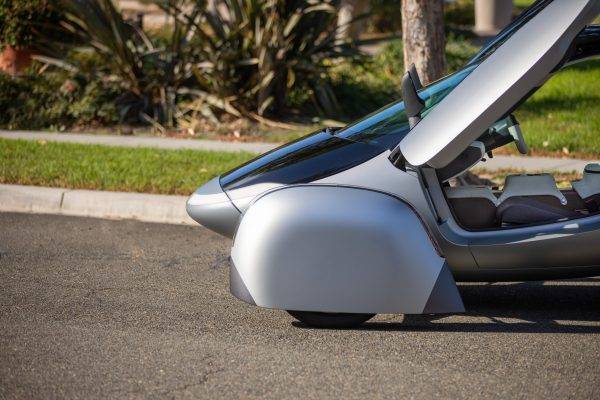





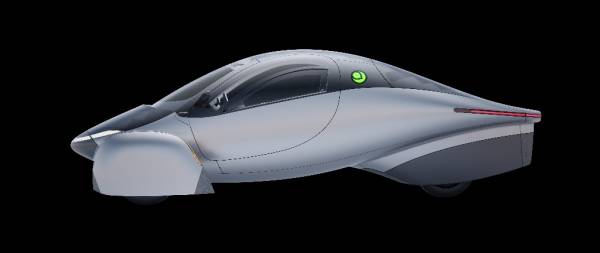





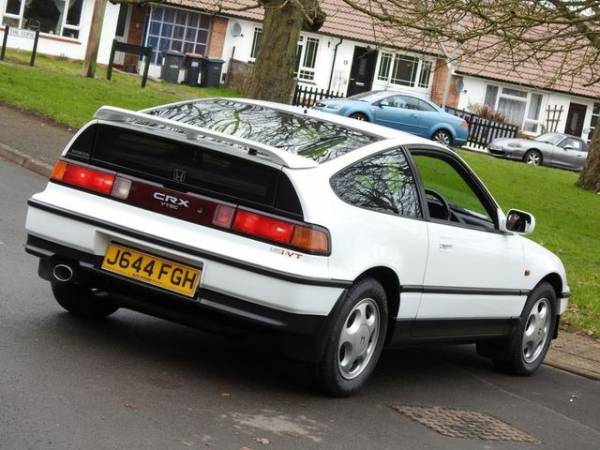


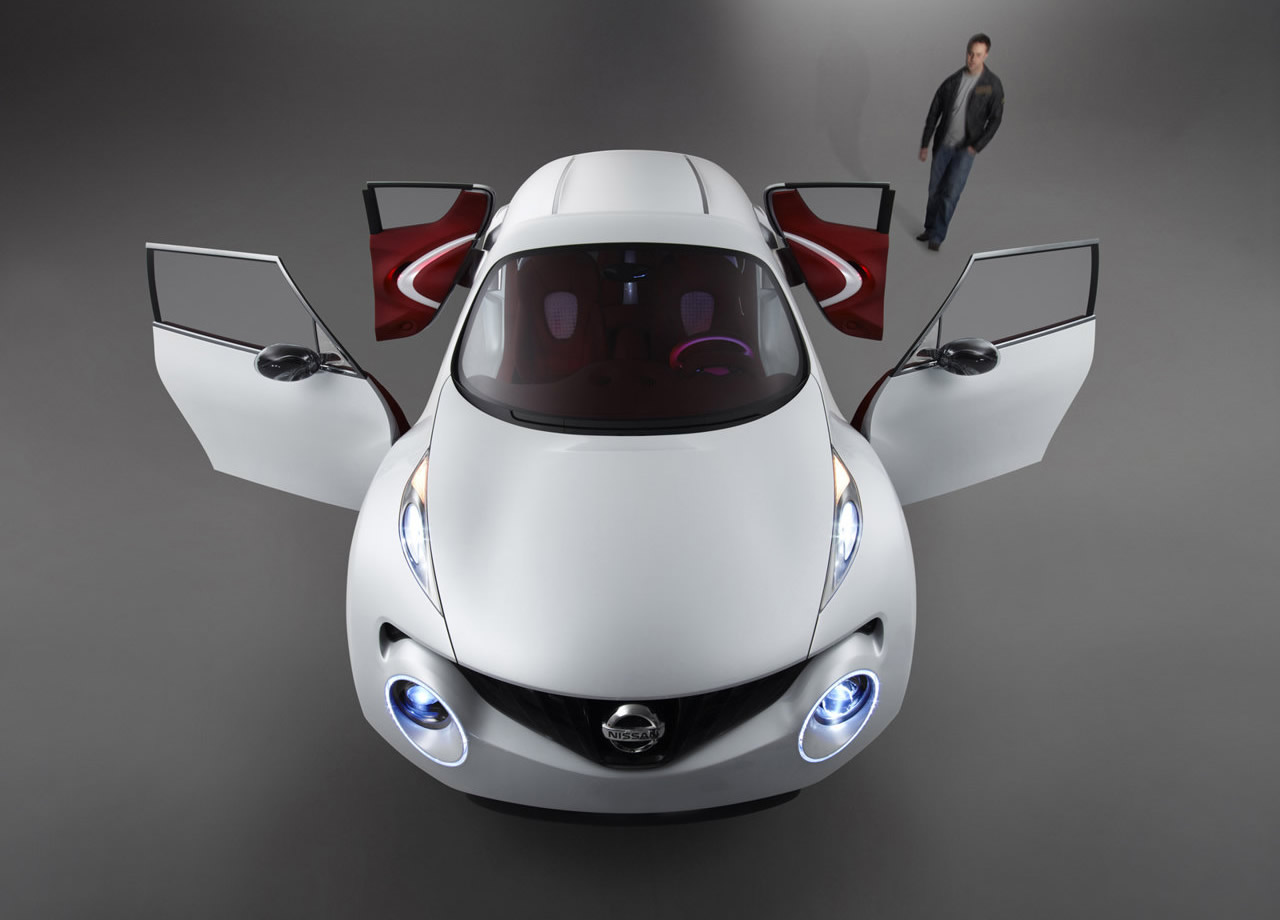





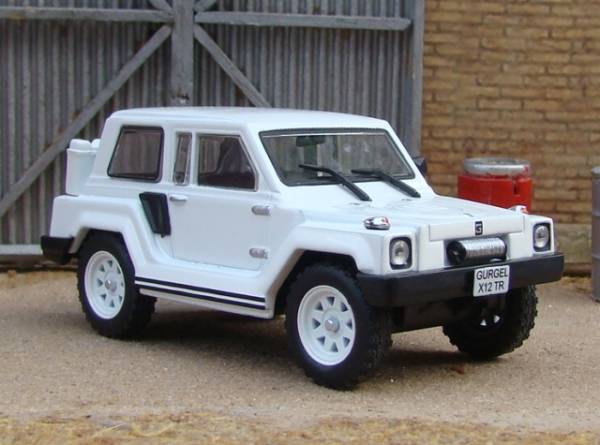


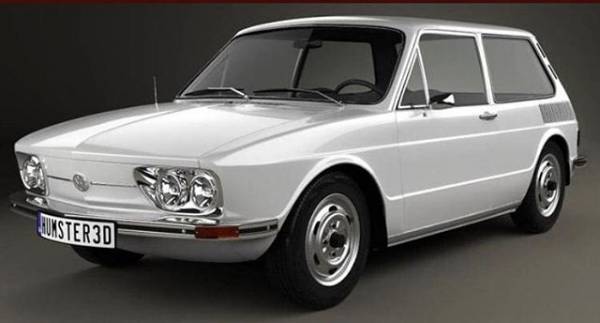

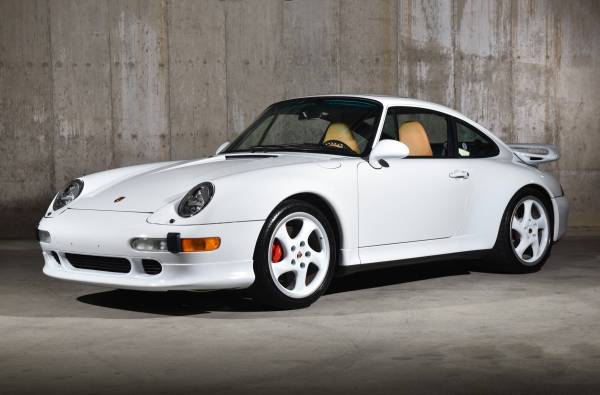


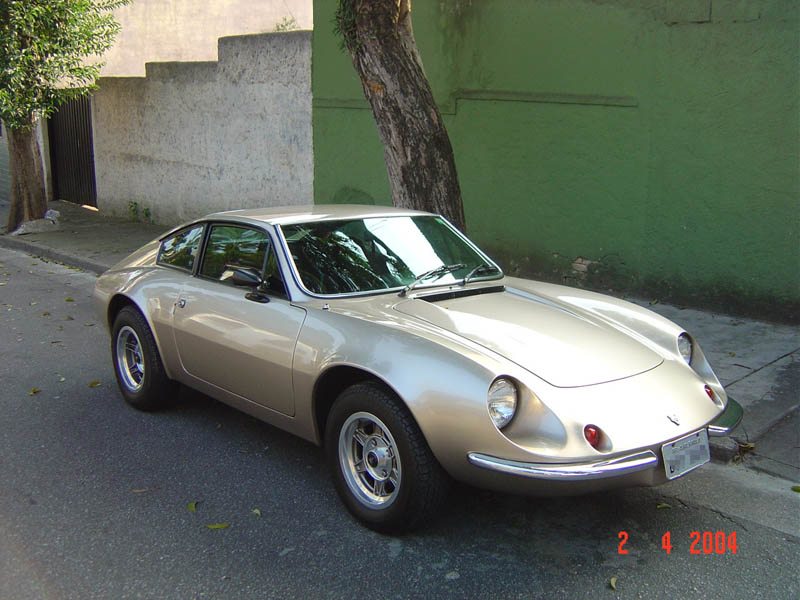







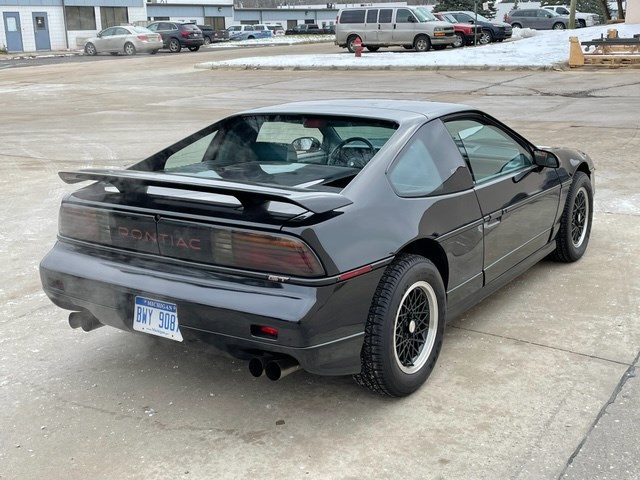

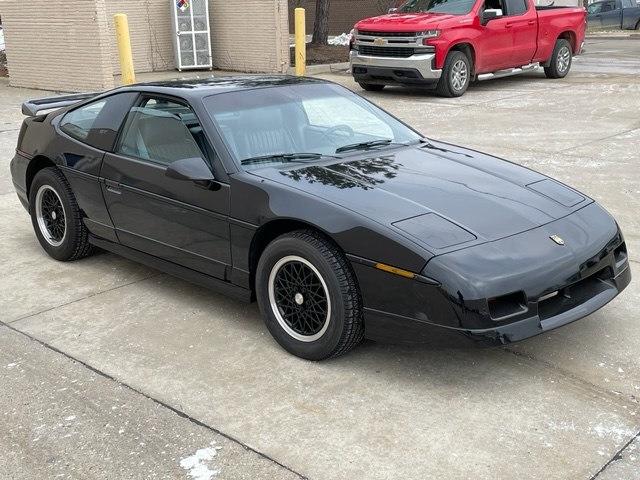


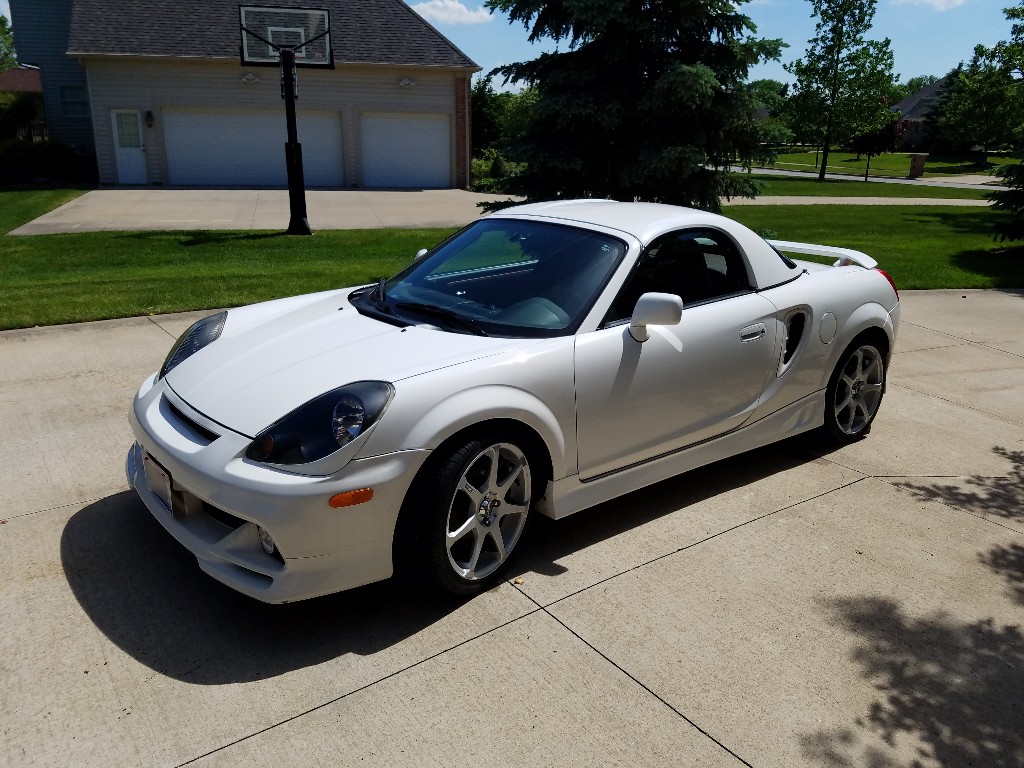


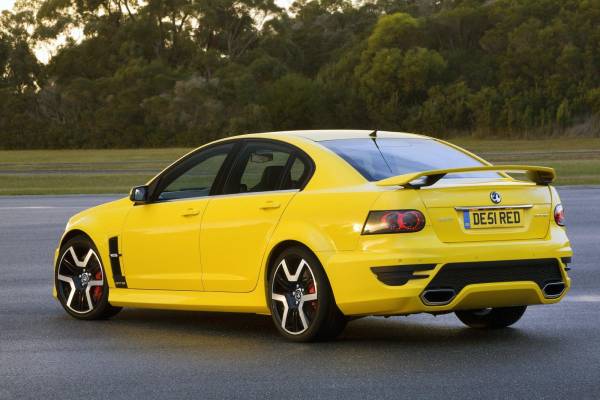
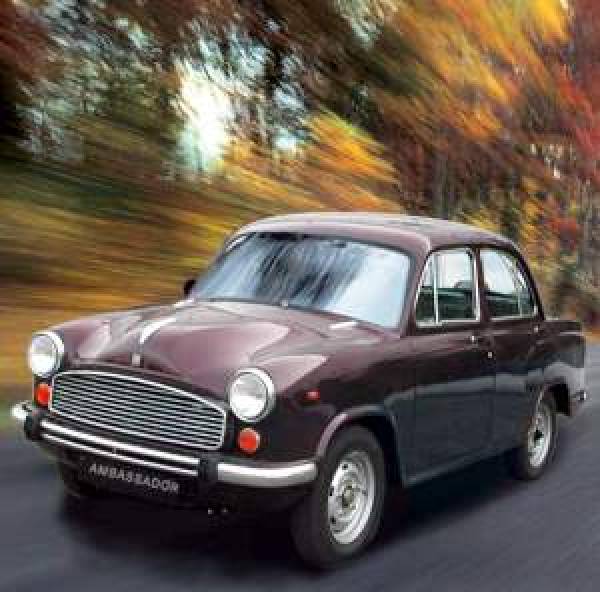




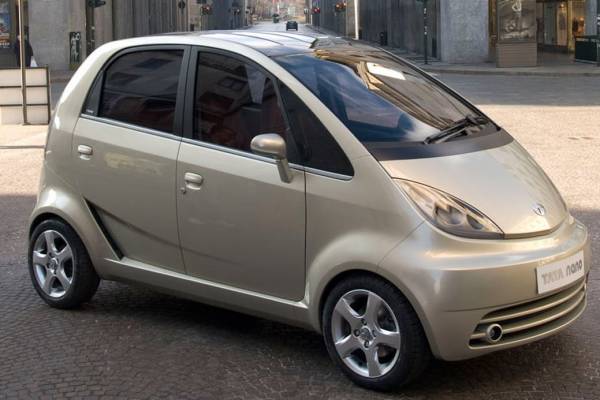







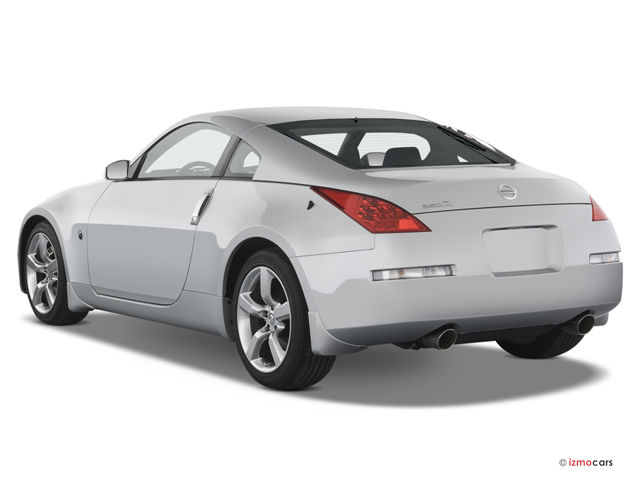







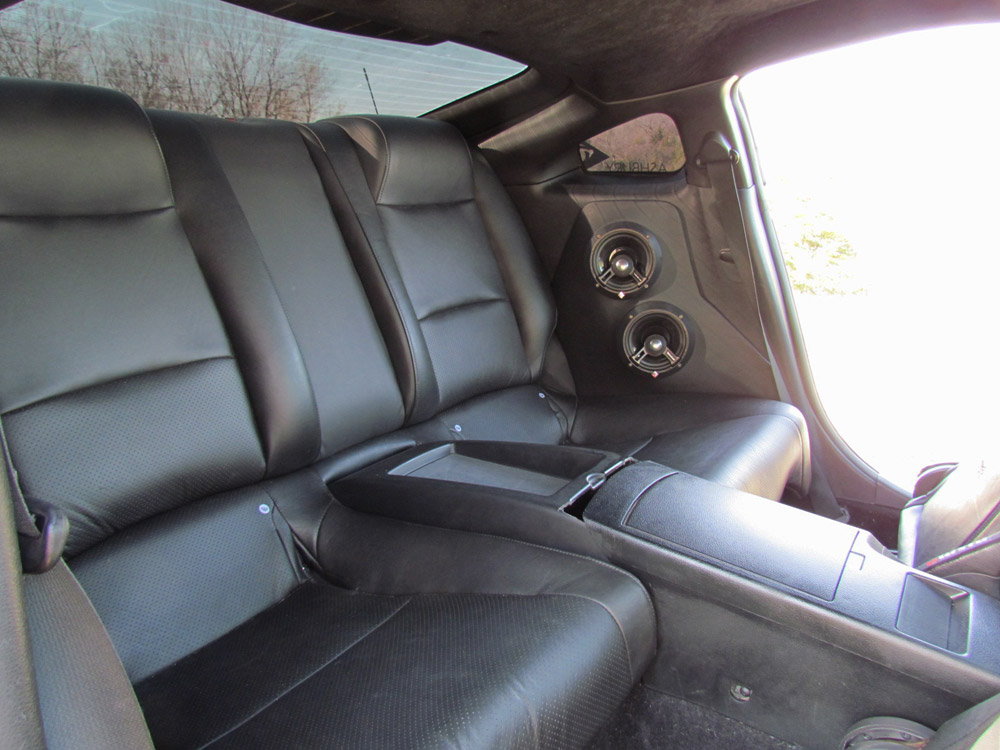

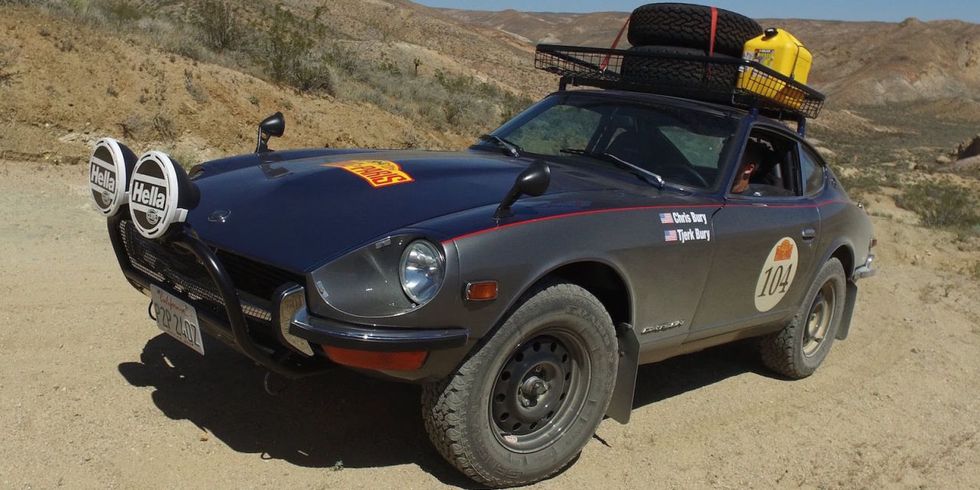


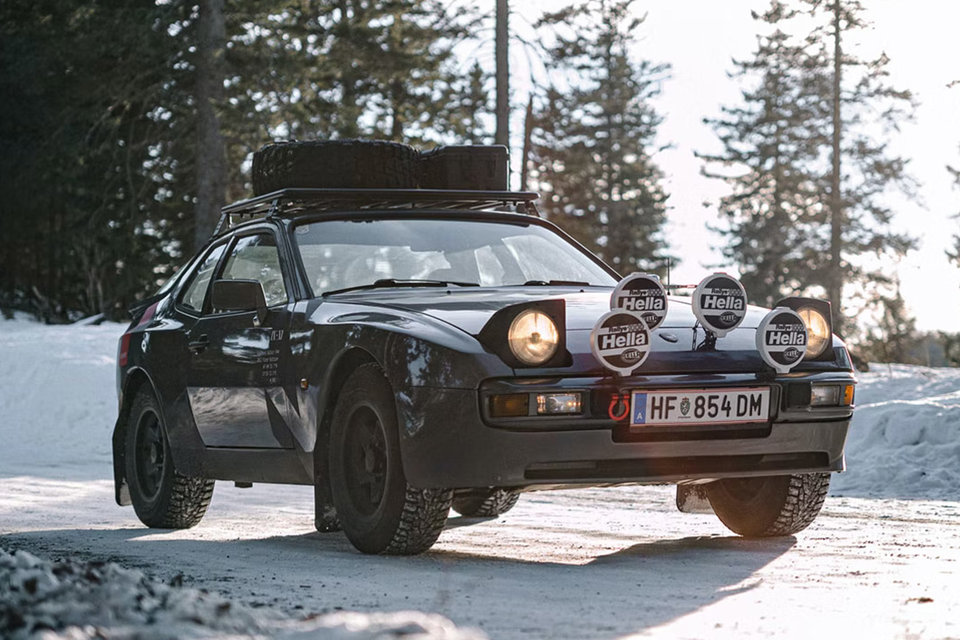
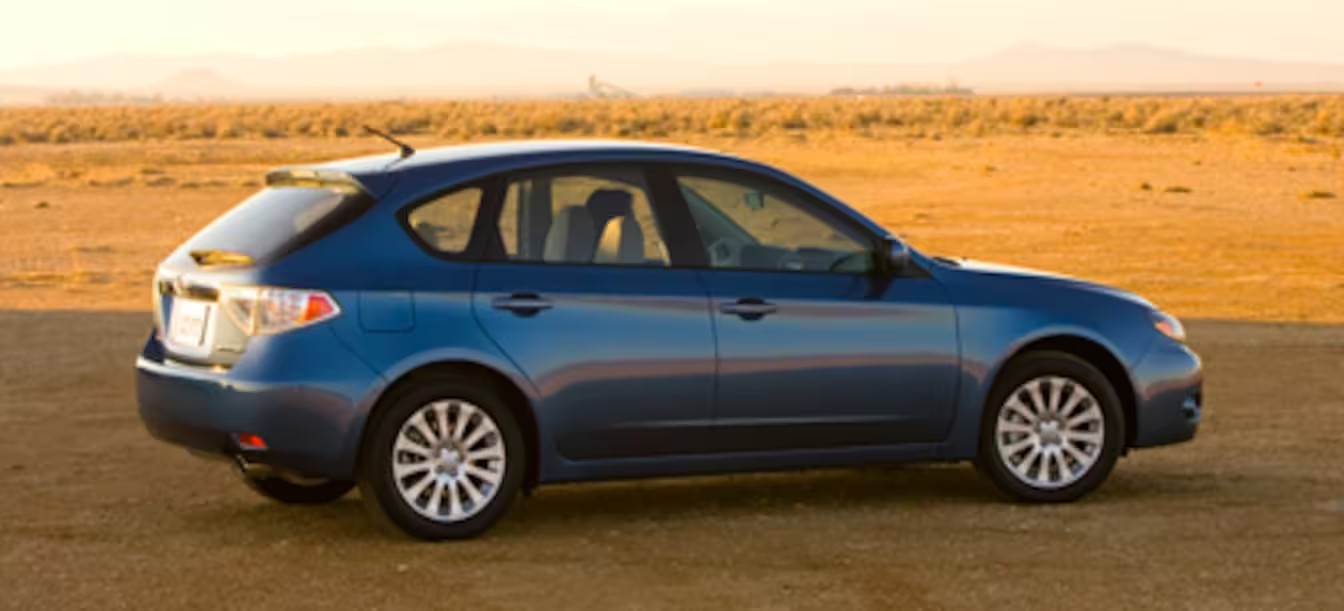


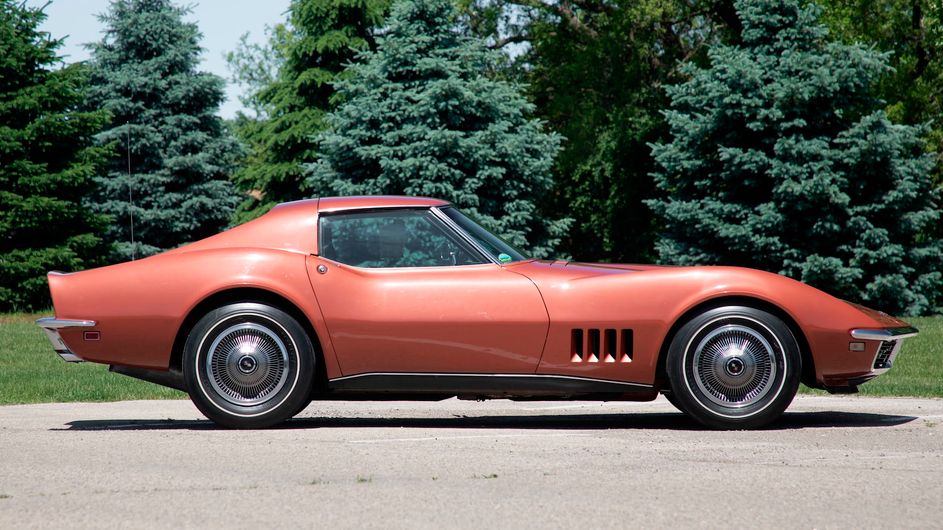

Discussion